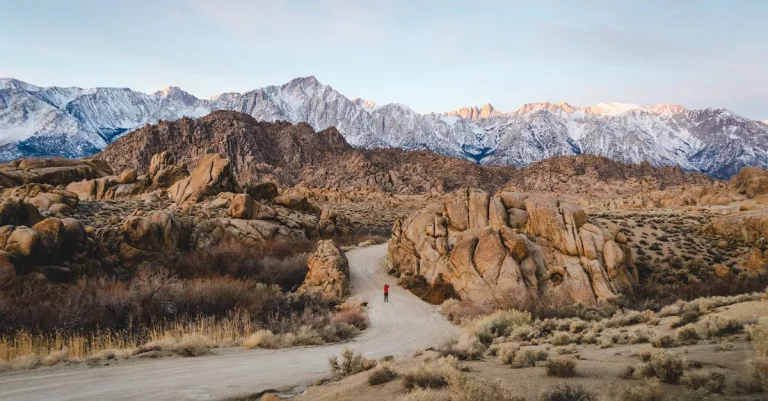Is Texas Hotter Than California? Evaluating The Climate And Temperatures
With their sprawling deserts and long sunny summers, both Texas and California are known for getting extremely hot. But when it comes to comparing the temperatures and climate between these two iconic sunbelt states, which one really gets hotter?
If you’re short on time, here’s a quick answer: Overall, Texas is generally hotter than California in terms of average summer highs and record temperatures, but parts of inland Southern California get nearly as hot as Texas during summer.
This in-depth analysis will compare the climate, average temperatures and extreme heat across Texas and California. We’ll look at regional variations, record highs, average summer peaks, and more climate data to determine which state truly experiences hotter heat.
Comparing Statewide Average Temperatures
When it comes to comparing the average temperatures between Texas and California, several factors come into play. Both states have diverse climates, with variations in temperature due to their geographical features and regional differences.
Let’s take a closer look at the average temperatures in these two states.
Texas’ Hotter Average Summer Highs
It’s no secret that Texas is known for its scorching summers. The Lone Star State experiences high temperatures during the summer months, with average highs ranging from the mid-90s to over 100 degrees Fahrenheit (35-38 degrees Celsius) in many regions.
Cities like Austin, Houston, and Dallas often see extended periods of sweltering heat, making air conditioning a necessity rather than a luxury.
The hot climate in Texas can be attributed to its size and location. The state’s vast landmass and its proximity to the Gulf of Mexico contribute to the high temperatures. The humid subtropical climate in the eastern parts of the state exacerbates the heat, while the arid desert-like conditions in the western regions result in even hotter temperatures.
California’s Milder Winters
On the other hand, California boasts a more temperate climate overall, with milder winters compared to Texas. The coastal areas of California, such as Los Angeles and San Francisco, benefit from the moderating influence of the Pacific Ocean, leading to relatively mild winters and cooler summers.
However, it’s important to note that California is a large state with diverse geographical features, resulting in variations in temperature across different regions. Inland areas, such as the Central Valley and the deserts, can experience hotter summers and colder winters compared to the coastal regions.
Regional and Elevation-Based Variation
Both Texas and California exhibit regional variations in temperature due to their size and diverse landscapes. For instance, mountainous regions in both states experience cooler temperatures due to higher elevations.
In Texas, the Guadalupe Mountains and the Davis Mountains offer relief from the heat during the summer months. In California, the Sierra Nevada Mountains and the coastal ranges contribute to variations in temperature.
Additionally, elevation plays a significant role in temperature variations within each state. Higher elevations generally have cooler temperatures, while lower elevations tend to be hotter. For example, the average temperature in El Paso, Texas is significantly hotter compared to the cooler temperatures found in cities like Amarillo or Lubbock.
Extreme Heat and Record Temperatures
When it comes to extreme heat and record temperatures, both Texas and California have their fair share of scorching hot days. Let’s take a closer look at some of the hottest temperatures ever recorded in these states.
Texas’ Hottest Temperature Ever Recorded
Deep in the heart of Texas, you’ll find the town of Seymour, which holds the record for the highest temperature ever recorded in the Lone Star State. On June 28, 1994, the mercury soared to a blistering 120 degrees Fahrenheit (49 degrees Celsius).
This scorching temperature showcases just how intense the heat can get in Texas.
California’s Hottest Locales
While Texas may hold the record for the hottest temperature, California is no stranger to extreme heat. In July 1913, Death Valley famously reached a scorching 134 degrees Fahrenheit (56.7 degrees Celsius), the highest temperature ever recorded on Earth.
Death Valley’s extreme heat is a testament to the sweltering conditions that can occur in certain parts of California.
Humidity Levels and Heat Indexes Compared
When evaluating the heat in Texas and California, it’s important to consider factors beyond just temperature. Humidity levels play a significant role in how hot it feels outside. While Texas generally has higher humidity levels, California experiences drier heat, which can make temperatures feel more tolerable.
The heat index, which takes into account both temperature and humidity, offers a more accurate representation of how hot it feels. In Texas, where humidity levels can be high, the heat index can often be several degrees higher than the actual temperature.
California, on the other hand, tends to have lower heat indexes due to the drier heat.
It’s worth noting that both states have regions with diverse climates, so it’s essential to consider specific locations when comparing the heat between Texas and California. For instance, coastal areas in California benefit from cooler ocean breezes, while inland areas may experience more intense heat.
Climate Factors That Influence Each State’s Heat
When it comes to evaluating the climate and temperatures of Texas and California, several factors come into play. Understanding these climate factors is essential to determine which state is hotter.
Coastal vs. Inland Geography
One significant difference between Texas and California’s climate is their coastal and inland geography. California has a long coastline stretching along the Pacific Ocean, while Texas has a relatively shorter coastline along the Gulf of Mexico.
The proximity to the ocean moderates California’s temperatures, leading to cooler summers and milder winters along the coast. In contrast, Texas experiences more extreme temperatures due to its inland location, with hotter summers and colder winters compared to California’s coastal regions.
Effects of Deserts vs. Forests
Another factor influencing the heat disparity between Texas and California is the presence of deserts and forests. California is home to various ecosystems, including the Mojave and Sonoran Deserts, which experience scorching temperatures.
However, the state also boasts vast forested areas, such as the Sierra Nevada and the Coastal Redwood forests, which offer relief from the heat. In contrast, Texas is predominantly known for its arid regions, including the Chihuahuan Desert, which contributes to the state’s overall hotter climate.
The Role of Elevation and Mountains
Elevation and mountainous terrain also play a crucial role in determining the climate of each state. California is geographically diverse, encompassing the Sierra Nevada, Cascade Range, and the coastal mountains.
These mountain ranges help create microclimates, causing variations in temperature and precipitation across the state. In contrast, Texas has relatively lower elevations, with the highest point being Guadalupe Peak in the Guadalupe Mountains.
The absence of significant mountain ranges in Texas results in fewer variations in climate, contributing to its overall hotter temperatures.
It is important to note that climate patterns can vary within each state, and localized factors such as urban heat islands and land use changes can also influence temperatures. To delve deeper into the climate specifics of Texas and California, refer to NOAA and Climate.gov for authoritative information.
How Heat Impacts Life in Each State
When it comes to comparing the climates of Texas and California, one of the most significant factors to consider is the impact of heat on daily life. From outdoor activities to health risks, the heat can have a profound effect on how people live in each state.
Outdoor Activities and Lifestyle
Texas and California both offer a wide range of outdoor activities due to their warm climates. In Texas, residents can enjoy activities such as hiking, fishing, and camping year-round. The state’s hot temperatures encourage people to take advantage of rivers, lakes, and coastal areas for swimming and water sports.
Similarly, in California, outdoor enthusiasts can explore national parks, go surfing, or hit the slopes in the Sierra Nevada Mountains. The warm weather in both states allows residents to lead an active and outdoor-oriented lifestyle.
Air Conditioning Costs and Usage
With scorching summer temperatures, air conditioning becomes a necessity in both Texas and California. However, the cost and usage of air conditioning can vary between the two states. In Texas, where the summers can be extremely hot, air conditioners are used extensively.
This high demand for cooling can drive up electricity bills. On the other hand, California’s coastal regions benefit from cooler ocean breezes, resulting in lower air conditioning usage and costs compared to the inland areas.
Health Risks from Extreme Heat
Extreme heat poses health risks in both Texas and California. Heat-related illnesses, such as heat stroke and heat exhaustion, can occur when the body’s temperature regulation system becomes overwhelmed.
In Texas, where temperatures can reach well over 100 degrees Fahrenheit (37.8 degrees Celsius), heat-related illnesses are a significant concern. In California, the risk of heat-related illnesses is also present, especially in the inland areas where temperatures can soar during heatwaves.
It is important for residents in both states to stay hydrated, seek shade, and take necessary precautions to prevent heat-related health issues.
Conclusion
While both states get extremely hot, the data shows that overall, Texas experiences hotter average temperatures, higher extremes and more prolonged duration of heat than California. However, Southern California also sustains blistering summer heat. Ultimately, inland regions of both states face the most intense heat due to geographic and climate factors. When evaluating lifestyle in Texas versus California, extreme temperatures should be an important consideration.








